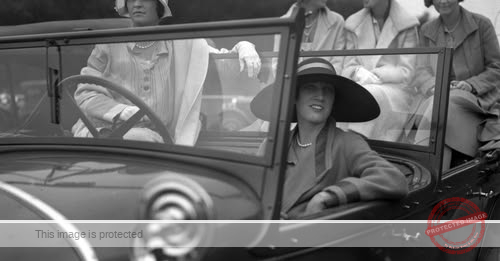
This week marks the 100th anniversary of the publication of F. Scott Fitzgerald’s “The Great Gatsby.” It was destined to be the definitive literary monument of the Roaring ’20s, a decade of fortunes made and lost on Wall Street. Prohibition gave booze the lure of the illicit.
But the novel’s debut on April 10, 1925, was a dud.
It sold fewer than 20,000 copies. The reviews were generally favorable, if not enthusiastic. But it was trashed by H. L. Mencken, editor of the Baltimore Sun and dean of America‘s literary critics.
“The theme is the old one of a romantic and preposterous love,” he wrote, “reduced to a macabre humor.”
That stung Fitzgerald, who had been developing the storyline through previous short stories and novels. Like many writers whose work is classified as fiction, that didn’t mean that Scott, as he was known, made it up out of the whole cloth.
He distilled real-life experiences into characters moving through scenes he’d witnessed. Thanks to Fitzgerald’s meticulous record-keeping, we know the route the novel’s protagonists, under the aliases Jay Gatsby and Daisy Buchanan, took to the story’s Long Island setting.
Fitzgerald kept a ledger book in which he listed his literary earnings and daily routine. At the top of page 169, he recorded Daisy Buchanan’s conception, by noting: “Met Ginevra.”
Ginevra King was a young socialite from Lake Forest, Illinois. “Once I thought that Lake Forest was the most glamorous place in the world. Maybe it was,” Fitzgerald recalled to his daughter 25 years after his first visit. He was a houseguest there in 1915.
One of the homes he visited was on Kingdom Come Farm, a 50-acre estate designed for Ginevra King’s father by the ultra-fashionable architect Howard Van Doren Shaw.
It and other mansions that line Lake Forest’s ravines and shoreline are punctuated by so many windows they often look more like hotels than family residences.
They look like the world inhabited by Isabelle, the heroine of Fitzgerald’s 1919 story, “Babes in the Woods.”
“The vista of her life seemed an un-ended succession of scenes like this, under the moonlight and pale starlight, and in the backs of warm limousines and low cosy (sic) roadsters stopped under sheltering trees — only the boy might change.”
Time magazine pronounced Ginevra King and three friends the cream of the crop of Lake Forest debutantes in 1919. They wore gold pinkie rings engraved “The Big Four.” One was Edith Cummings, a premier amateur golfer of the 1920s.
She appeared as Jordan Baker in “Gatsby,” where Scottie wrote: “there was a jauntiness about her movements as if she had first learned to walk upon golf courses on clean, crisp mornings.”
Years later, King described herself in a letter to Fitzgerald’s daughter: “Goodness, what a self-centered little ass I was!”
Fitzgerald and King met Jan. 4, 1915, at a sledding party in St. Paul, Minnesota, his hometown. She was 16 and visiting her roommate at the ultra-posh Westover Schoo
l in Middlebury, Connecticut. He was 18 and a freshman at Princeton University.
“The couple next to them had their backs turned and he kissed her little neck and her ears and never her lips,’’ he wrote in “Winter Dreams,” a short story based on that sleigh ride.
From the moment they met, King and Fitzgerald were united in a peculiarly Jazz Age puppy-love affair. “Her voice is full of money,” he wrote of Daisy Buchanan, King’s alias in “Gatsby.”
